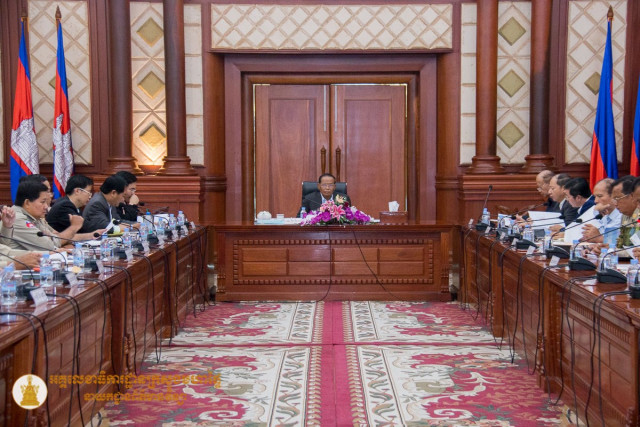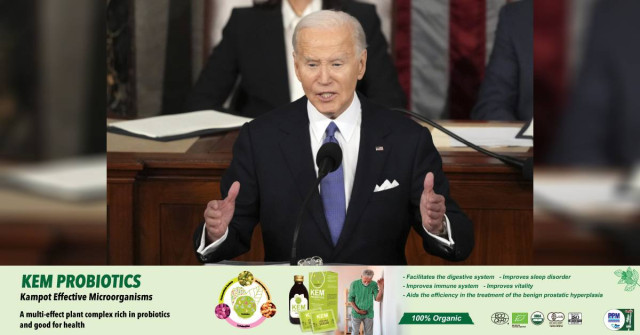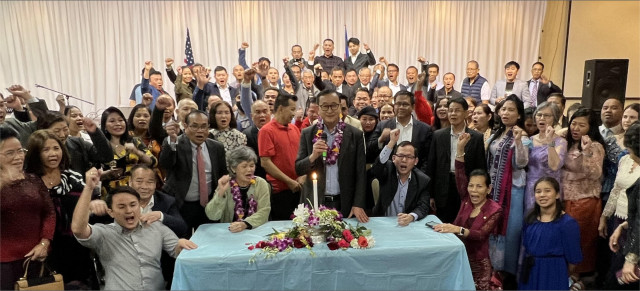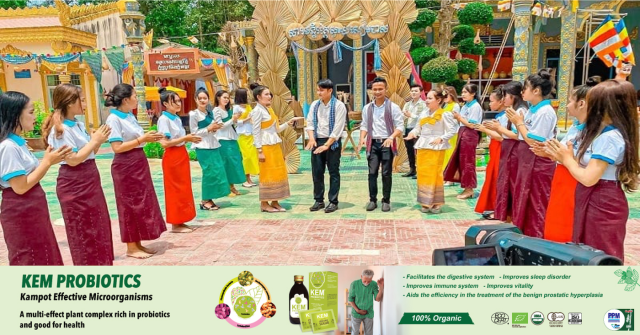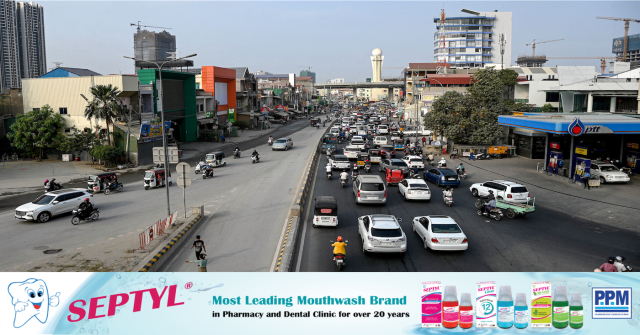Tonle Sap Lake’s Troubled Waters
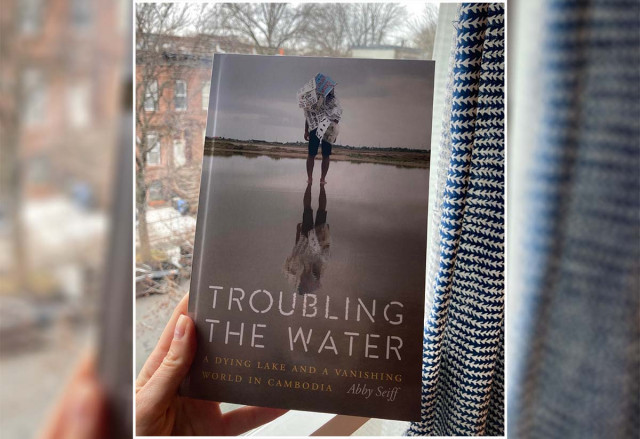
- By Sao Phal Niseiy
- March 23, 2022 6:05 PM
Author spells out dangers to crucial resource
Abby Seiff worked as a journalist in Cambodia periodically between 2009 and 2018. In 2016 and 2017 she reported on the Tonle Sap Lake and on other important Mekong locations around Cambodia. She has just written a book, “Troubling the Water: A Dying Lake and a Vanishing World in Cambodia.” In it, she sets out the grim issues facing the largest freshwater lake in Southeast Asia, from the impact of the climate crisis to rampant illegal fishing.
Sao Phal Niseiy: Could you please offer an overview of your book?
Abby Seiff: Right now, the Tonle Sap is one of the most threatened lakes in the world. But, as anyone in Cambodia knows, it’s a critical body of water both for its fisheries and for cultural reasons.
The Tonle Sap River is also the only known river in the world to reverse course twice a year, and that flood pulse has made it an astonishingly biodiverse and successful fishery.
Unfortunately, climate change and hydropower dams are killing off that flood pulse while overfishing is greatly depleting its fish stocks.
This book explains how each of those is impacting the lake and the fishing families who rely on it. It shows how those families are adapting, or not, to the changing circumstances, for instance, by migrating for work.
And the book explores the historical and cultural significance of the lake. So many of the written accounts from ancient foreign visitors to Cambodia, from the thirteenth century through French colonialism, include awed descriptions of the Tonle Sap — which I think really highlights how incredible this lake is.
Sao Phal Niseiy: The book highlights the grim issues facing the biggest and most important freshwater lake in Cambodia, and what appears to be an irreversible trend of the change in ecosystem of the lake – something people describe as vanishing forest that brings along fish. What prompted you to write it?
Abby Seiff: I had done a bit of reporting on hydropower dams when I was at the Daily and the Post and was always paying attention to those impacts. In 2016, there was a very bad drought and forest fires broke out at the lake.
My friend Nicolas Axelrod, a photographer living in Phnom Penh at the time, wanted to see the situation on the Tonle Sap and invited me. We spent about a week going around the lake, talking to anyone we could and I was very struck by how bad the situation appeared. No one was catching any fish.
The problems seemed to be threefold, dams, climate, and illegal fishing. We went back the next year, but even though the drought had ended, the situation wasn’t much better. There have been some superb books about the Mekong but I thought there was room to do a book just about the Tonle Sap.
In the years that I was writing the book, the water level of the Tonle Sap River and lake levels kept dropping year after year, and the anecdotal reports I was hearing about fish catches just kept worsening. I wanted to write about the lake to show what was happening but also to capture what has been lost: all these descriptions of the truly abundant fisheries.
Sao Phal Niseiy: Many experts warn that there is a change in its hydrology in Tonle Sap Biosphere Reserve, leading to changed ecosystem functions for fish habitat, flooded forest, sediment as well as pollution. What is your take on this?
Abby Seiff: It’s very clear that the change in hydrology, meaning the way the water is moving in and out of the lake, is having all sorts of impacts on the larger ecosystem.
The change in hydrology from dams and climate change is bad enough, but when you add in things like illegally clearing the flooded forest for farmland or large-scale illegal fishing or chemical runoff from farms, it’s causing all sorts of extra problems.
During the wet season, as your readers would know very well, the whole flood plain surrounding the lake is flooded — not just with water but with nutrient-rich sediment, which is very important for paddy rice. So, the changing hydrology doesn’t just affect the lake’s fisheries, but it impacts the agriculture surrounding the lake.
Sao Phal Niseiy: A lot of existential threats facing the lake ranging from the loss of flooded forests, increasing frequencies of droughts driven by the climate crisis and other man-made issues are mentioned by many. What factors do you think continue to significantly cause the lake to be dying? And do you think your book can draw greater attention and embolden more action to save the lake?
Abby Seiff: Existential threats is a good way to put it. The loss of flooded forests impacts habitats for fish species and nutrient delivery, among other things, for instance, protection against wind and flooding.
Climate change leads to extremes: worsening droughts but also worsening floods, all of which are heightened, further, by man-made actions such as hydropower or destruction of forests or wetlands infilling.
In the case of the Tonle Sap, we know that hydropower dams impact fish migration as well as how silt can move through the Mekong system. And then there are more local man-made issues, including overfishing.
Cambodia has great fisheries laws but unfortunately, there’s still a lot of illegal fishing in the lake. It’s an issue of enforcement, but also of where the enforcement is taking place. Most of these crackdowns appear to be on small fishers whereas the biggest impact is likely from large-scale illegal fishing.
I don’t know if my book will draw greater attention because I think all these issues are very well covered by Cambodian media and I think many Cambodians are well aware of the problem. But of course, I hope that more interest or attention could lead to a better outcome for the lake.
Sao Phal Niseiy: Assuming that no actions are taken to save the lake, in your opinion, what repercussions do you anticipate, taking into account economic, social and environmental dimensions?
Abby Seiff: What a good question. Well, we’re already seeing many of these repercussions. From a social standpoint, these include very high rates of indebtedness among fishing families, with more and more of the young generation migrating for work that is often very underpaid and exploitative.
Of course, this isn’t unique to the lake and we see this problem across rural Cambodia. With less fish available, less money is coming in meaning kids are less likely to go to school and health problems are less likely to be treated.
Families are under severe financial strain which causes all sorts of stressors and knock-on effects. From a food security perspective, obviously losing the lake’s fisheries over time is a big blow but I will say it seems that farmed fish is really replacing lake fish.
Fish farming has grown so much that lately the annual farmed fish yield is about equal to the freshwater catch. But, while I’m no agricultural expert, I imagine that if the flood pulse totally stopped it could have some really negative impacts on crops grown in the lake’s flood plains.
Lastly, from an environmental standpoint, it’s not like the lake is going to disappear or anything like that. But this really unique ecological situation, this “beating heart” phenomenon could disappear. And we’ll keep seeing a drop in biodiversity with more and more species of fish and animals being lost.
Sao Phal Niseiy: This is the matter of life and death when it comes to the dying of the Tonle Sap Lake with a really complex ecosystem. Has enough action been taken to save the lake? Is it too late?
Abby Seiff: For the sake of the millions who depend on it, I really hope it is not too late. But I don’t feel that enough action has been taken.
Sao Phal Niseiy: If it is not too late, what practical and sustainable solutions you think Cambodia can carry out to urgently reverse the trend?
Abby Seiff: Some of this, like climate change, is totally out of Cambodia’s control but other aspects definitely can be helped.
Cambodia has committed not to build any mainstem Mekong dams, which is an important step. Even better would be to stop building tributary dams, which can also have a huge downstream impact as we’ve seen with the Lower Sesan 2.
Because most of the mainstem Mekong dams are in China, China does have the ability to sometimes help mitigate the downstream impacts. Beijing has shown some willingness to work with lower Mekong nations on timing water releases to help downstream when water levels are too high.
Obviously, that’s out of Cambodia’s hands, but working together with its neighbors to present a united front could prove important. More locally, we could see much greater enforcement of existing laws — which means a real anti-corruption push.
Large-scale illegal fishing, large-scale clearance of protected forests: none of this can happen without the collusion of someone in a position of power. Going after small fishers who are resorting to using illegal methods because there’s no fish left, or going after farmers who rented the land from a powerful individual, is not addressing the real source of the problem.
In general, focusing on the communities directly can be a huge help. Community-led conservation has a really strong track record and, if better protections were in place, I could imagine more of that yielding strong results.
In the meantime, I do think financial and/or vocational assistance for fishing families to give them an alternative source of income would go far. It is clear people cannot rely on fishing alone anymore and need more options besides MFI loans and risky, low-paid construction worker jobs.






